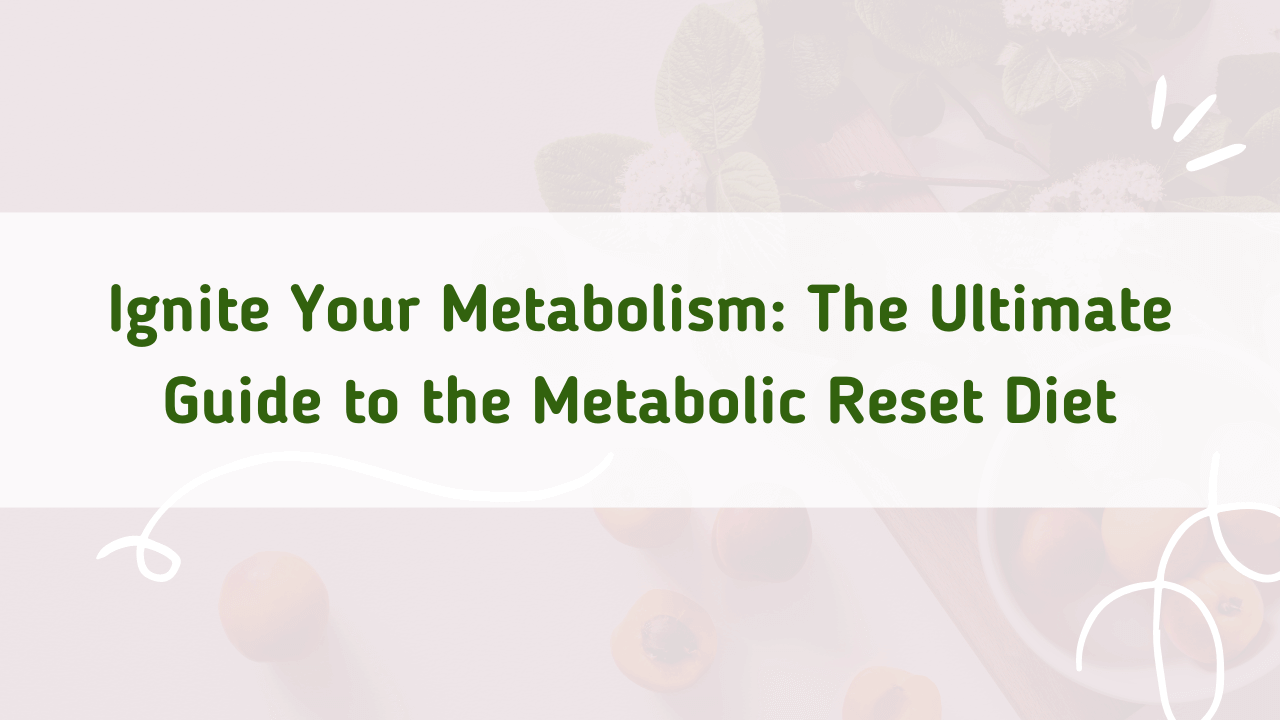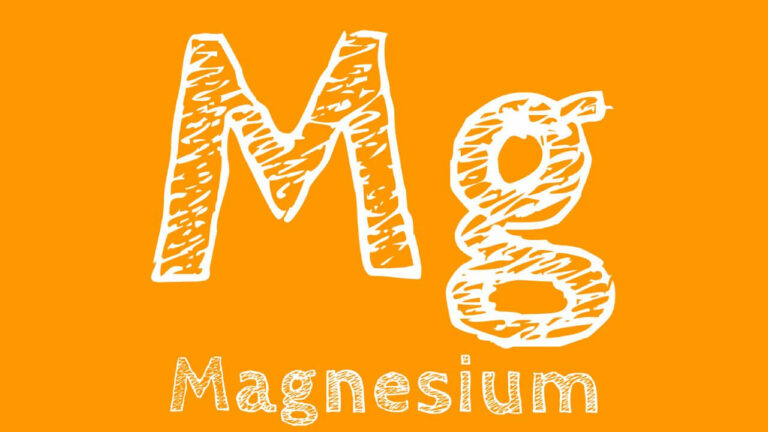The Metabolic Reset Diet: Understanding Its Benefits and Downsides

As a means to lose weight and boost physical health, many turn to various strategies. Among the methods gaining popularity is the metabolic reset diet.
This dietetic approach underlines regulating body weight through a harmonious blend of precise food choices, sufficient sleep, regular physical activity, and potentially even a supplementary regimen. But what is it exactly? Let’s find out.
Contents
What Is a Metabolic Reset Diet?
The metabolic reset diet is a meal plan crafted to boost your metabolic rate, enabling your body to incinerate more calories and aiding in weight loss.
The foundational idea of this diet suggests that, over time, factors such as unhealthy eating habits, insufficient exercise, and lack of sleep can lead to a slow metabolism.
This sluggishness often culminates in unwelcome weight gain and struggles with achieving sustained weight loss.
The metabolic reset diet aims to “reboot” your metabolism, enhancing the body’s efficiency at metabolizing food intake into energy, thereby catalyzing fat loss.
Benefits of a Metabolic Reset Diet
Promotes Weight Loss
Have you ever wondered what could rev up your metabolism and pave the way for weight loss? Meet the metabolic reset diet.
Engineered to fire up your metabolic rate, it nudges your body to burn more calories and potentially drop some pounds.
The secret lies in choosing nutrient-packed, fewer-calorie foods and shoving processed, calorie-rich alternatives away.
This approach crafts a calorie deficit, compelling your body to draw energy from stored fat, leading to fat loss.
The concept is simple: a caloric deficit is born when your caloric intake dips below your body’s calorie-burning rate.
Consequently, your body taps into stored body fat for an alternative energy source, triggering weight loss.
Enhances Metabolic Efficiency
The beauty of the metabolic reset diet lies in its knack for enhancing your metabolic efficiency. This diet advocates foods that stoke the metabolic rate, like lean protein.
Proteins give your body a workout, as they’re harder to break down than fats and carbs, bolstering your metabolic rate by inducing the thermic effect of food – the energy your body needs to digest, absorb, and eliminate what you eat.
The outcome? An increased protein intake could help you torch more calories throughout the day.
Plus, proteins lend a hand in building and maintaining muscle mass. More muscle equals a higher resting metabolic rate, indicating the pace at which your body burns calories when you’re chilling out.
Supports Healthier Eating Habits
The metabolic reset diet’s focus on whole foods over processed ones nudges you towards healthier eating habits.
It invites mindfulness in your eating and throws a wrench in your food cravings for unhealthy, high-calorie munchies.
Underpinning the metabolic reset diet are principles of satiety and nutrient density. Fiber-rich foods like fruits, veggies, and whole grains are often low on calories but score high on volume and nutrients.
They keep hunger pangs at bay, curbing tendencies to overeat or reach out for unhealthy snacks.
Improves Overall Physical Health
With a holistic approach, the metabolic reset diet doesn’t just stop at weight loss. It weaves in regular physical activity and adequate sleep, both significant contributors to your overall health.
Exercise isn’t just a calorie burner. It amps up cardiovascular health, boosts mood, and boosts energy levels.
Don’t skimp on sleep, either. It plays a crucial role in maintaining a healthy metabolism.
Studies reveal that sleep deprivation can interfere with regulating hunger and fullness hormones, triggering an increased appetite, higher calorie intake, and weight gain.
Enhances Body Composition
Lastly, the metabolic reset diet helps refine your body composition. By bumping up your intake of lean protein and coupling the diet with regular exercise, this diet aids in safeguarding lean muscle mass while promoting fat loss.
A higher muscle-to-fat ratio trims you down and elevates your metabolic rate, making weight maintenance a breeze in the long haul.
Foods to Eat on a Metabolic Reset Diet
- Lean proteins: Chicken, turkey, fish, tofu, eggs, and legumes.
- Whole grains: Brown rice, oats, quinoa, whole grain pasta, and whole wheat bread.
- Fruits and vegetables: All varieties, preferably fresh or frozen. Examples include berries, apples, oranges, leafy greens, bell peppers, and broccoli.
- Healthy fats: Avocado, olive oil, nuts, and seeds.
- Dairy: Preferably low-fat versions of milk, yogurt, and cheese.
- Hydrating beverages: Water, herbal tea, and unsweetened beverages.
For a delicious and enjoyable breakfast option that fits perfectly into the Metabolic Reset Diet, try this mouthwatering biscoff overnight oats recipe. These oats are made with oats, almond milk, and a hint of chia seeds, all while sticking to the principles of the Metabolic Reset Diet.
Foods to Avoid on a Metabolic Reset Diet
- Processed foods: Packaged snacks, instant noodles, ready meals, and canned foods high in sodium.
- Sugary beverages: Soda, energy drinks, and sweetened coffee or tea.
- High-fat foods: Fried, fast foods high in trans fats or saturated fats.
- Refined grains: White bread, white pasta, and white rice.
- High-sugar foods: Candy, pastries, cookies, and ice cream.
- Alcohol: Excessive alcohol can hinder weight loss efforts and disrupt sleep patterns.
Potential Downsides of a Metabolic Reset Diet
While the metabolic reset diet offers several benefits, it’s also essential to be aware of potential downsides. As with any dietary changes, it’s crucial to understand how this plan could impact your health or daily life.
Lack of Long-Term Studies
One of the significant question marks with the metabolic reset diet is the absence of long-term research scrutinizing its efficacy and safety.
Sure, it’s grounded on solid nutritional tenets like trimming calorie consumption and upping physical activity. Still, the assertion of “resetting” your metabolism could do with more scientific poking and prodding.
Much remains to be discovered about how diets tug at the strings of our metabolism.
Short-term gains might pop up, but how they morph into long-term health scenarios is still a mystery.
Thus, hopping onto this diet hoping for a dramatic metabolic makeover might not yield the desired results.
Potential for Nutrient Deficiencies
While the metabolic reset diet is all for wholesome, natural foods, it also pushes for a reduction in certain food groups, particularly those processed.
Granted, cutting down on processed foods is generally a thumbs-up move, but remember that not all processed foods are villains.
Some, like fortified cereals or canned legumes, can be allies in your nutritional journey.
Without careful planning, any diet that rings the death knell for certain foods or groups can trigger nutrient deficiencies.
This could rock your overall health and well-being and perhaps offset some of the diet’s promised perks.
Unrealistic Expectations and Unsustainability
The idea of a metabolic reset might paint a picture of a magic bullet or a fast lane to weight loss. This could set the stage for sky-high expectations.
Remember, sustainable weight loss is more of a marathon than a sprint, with shedding 1-2 pounds per week considered a healthy and achievable goal for most folks, rather than gunning for a rapid weight loss.
Additionally, some folks might find the diet’s restrictions tough to stick with in the long haul, potentially triggering weight loss and regaining yo-yo.
The winner in the diet game is usually the one you can stick with for life, which often means welcoming a broad spectrum of foods and allowing some dietary wiggle room.
Sample Metabolic Reset Diet
Here’s a simple 5-day meal plan that could be a foundation for a metabolic reset diet.
Day 1
- Breakfast: A bowl of oatmeal with mixed berries and a handful of almonds.
- Lunch: Grilled chicken salad with various vegetables and olive oil dressing.
- Dinner: Steamed salmon with quinoa and steamed broccoli.
- Snack: A piece of fruit or a small handful of nuts.
Day 2
- Breakfast: Greek yogurt with sliced bananas and a drizzle of honey.
- Lunch: Quinoa salad with chickpeas, cucumber, tomatoes, and feta cheese.
- Dinner: Baked turkey breast with sweet potatoes and green beans.
- Snack: A small piece of dark chocolate or a handful of berries.
Day 3
- Breakfast: Scrambled eggs with spinach and a slice of whole-grain toast.
- Lunch: Whole-grain wrap with lean protein (like turkey or chicken), vegetables, and avocado.
- Dinner: Grilled fish with a side of brown rice and mixed vegetables.
- Snack: Carrot and cucumber sticks with hummus.
Remember to drink plenty of water throughout the day and include some form of physical activity each day, whether that’s a brisk walk, a bike ride, or a workout class. Also, try to get a good night’s sleep each night to support overall health and metabolic function.
FAQ
What do you eat on a metabolic reset diet?
A metabolic reset diet is all about embracing nutrient-rich, low-calorie goodies. Think lean proteins, fruits that burst with flavor, vibrant vegetables, and wholesome grains. Conversely, it’s time to bid farewell to processed foods, sugary drinks, and foods high in fat.
How do you do a metabolic reset?
Revving up your metabolism involves a few key steps. You’ll want to monitor your calorie intake, spruce up your eating habits, incorporate more physical activity, and get plenty of sleep. For some people, a supplement regimen may also join the mix.
What is the 6-week metabolic reset program?
The 6-week metabolic reset program is a structured plan typically aiming to amp up your metabolism and promote weight loss over six weeks. It generally includes a detailed meal plan, exercise tips, and potentially some supplementation. However, remember, the specifics can fluctuate a tad.
What is a 21-day metabolic reset program?
The 21-day metabolic reset program is a condensed, more intensive sibling of the metabolic reset diet, crafted to jumpstart metabolic shifts over three weeks. It usually involves a stringent meal plan, a set workout schedule, and often some form of supplementation. Yet, it’s worth noting that the fine print can vary significantly depending on the program.

Rahul is a nutritionist and personal trainer with 3+ years of experience in the field of health coaching. He specializes in nutrition science, with a keen eye for how food choices, lifestyle habits, and physical activity impact our bodies.






